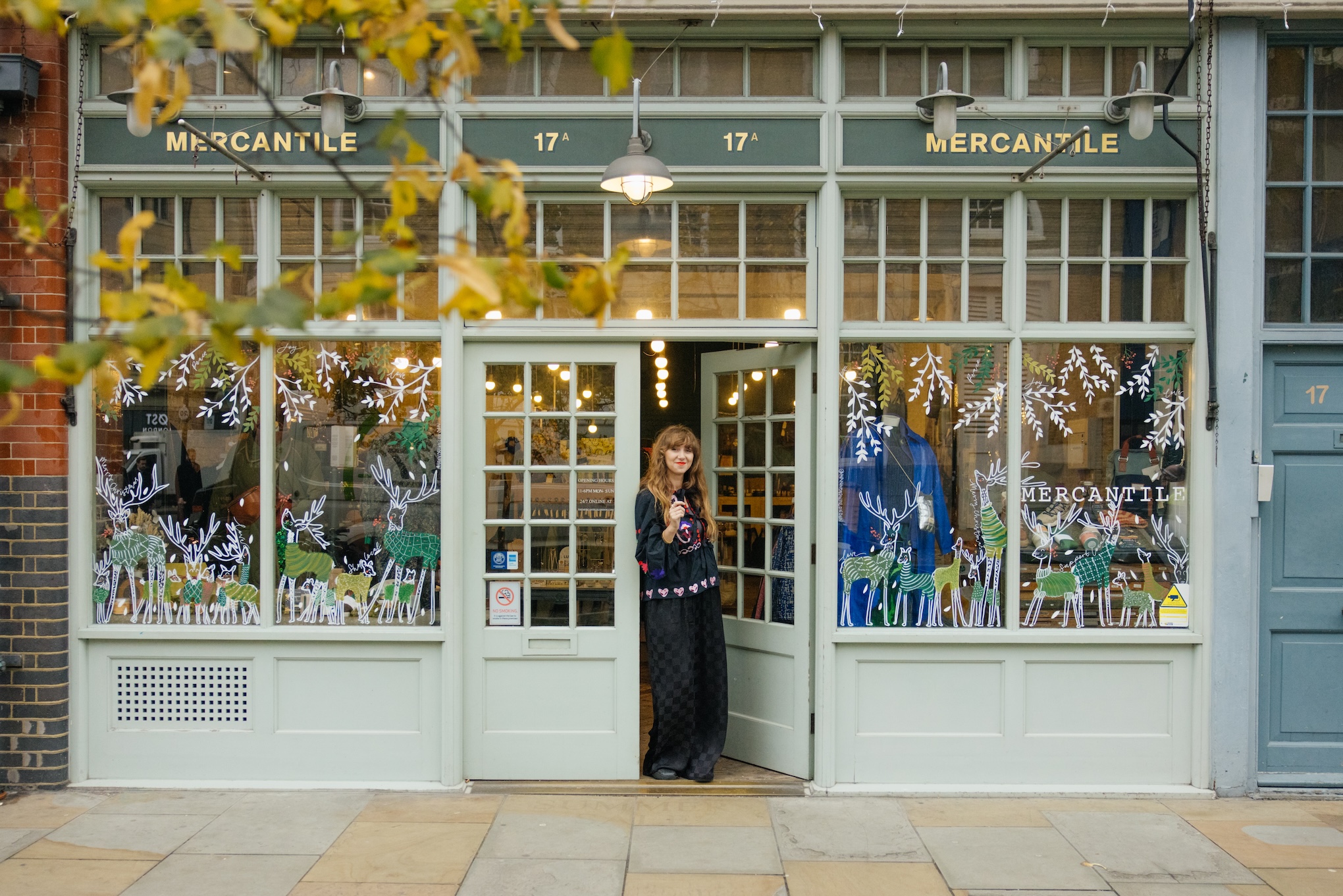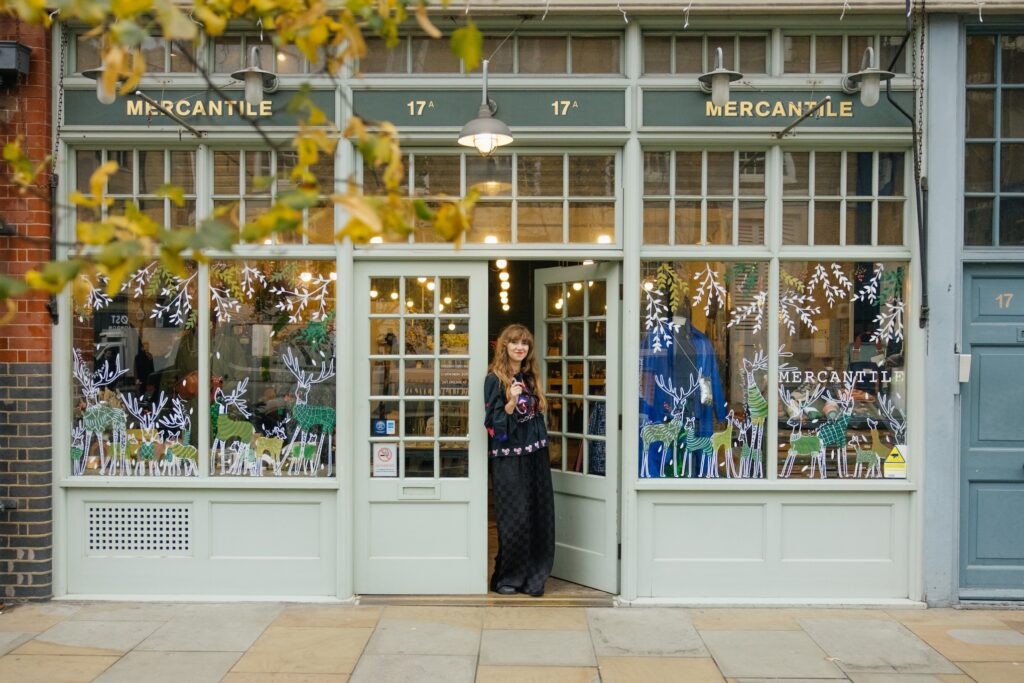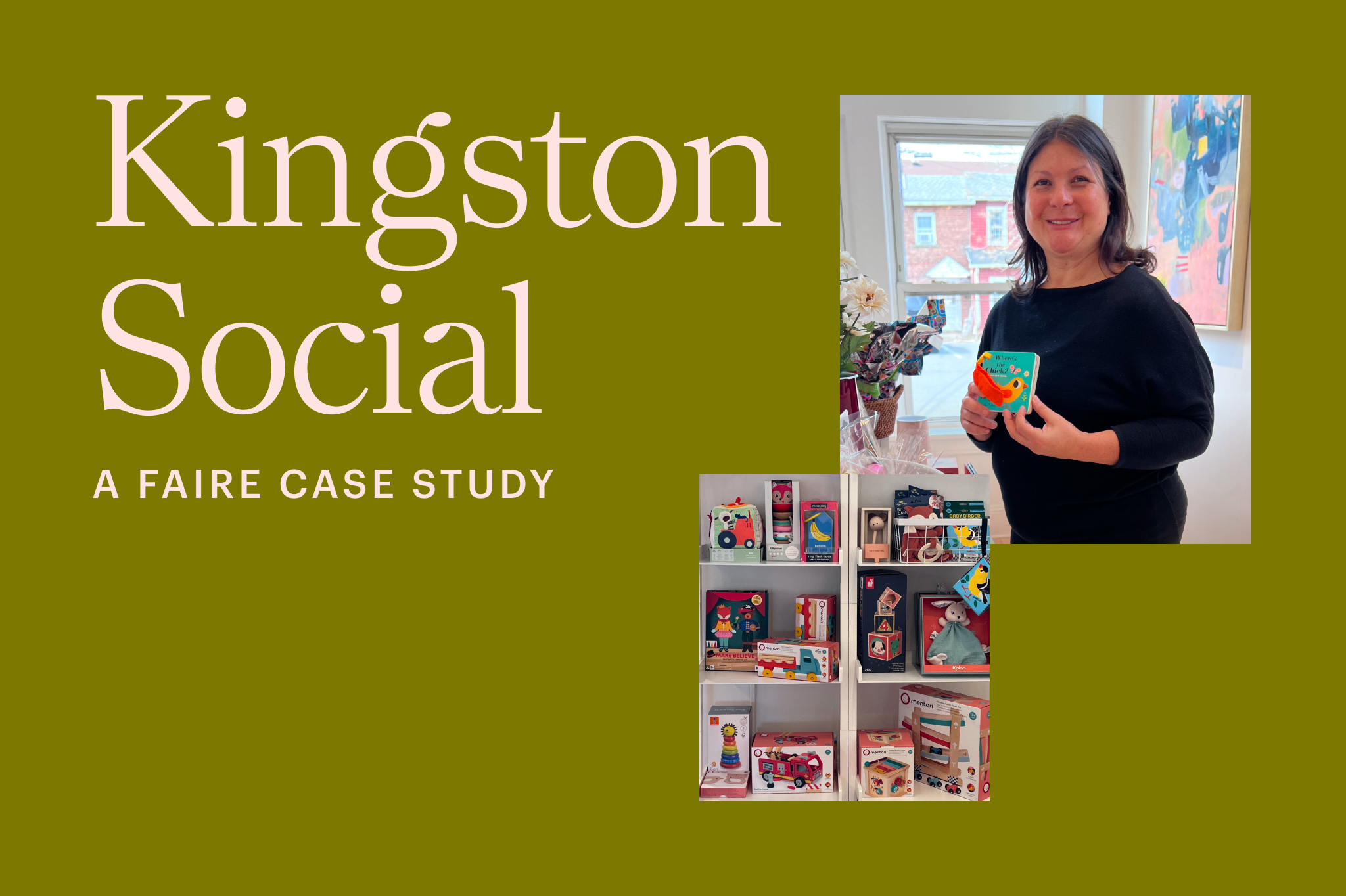

When you’re first starting out as a retailer, all the jargon and acronyms can be disorienting. Are you really supposed to know what AOV means? What about omnichannel retailing? There’s a lot to learn, but don’t worry … we’ve got you covered. You can bookmark this page and refer back to it whenever you need to! While retail terminology and abbreviations will continue to evolve, these core terms should help you navigate the retail waters with confidence.
The retailer’s glossary
This is by no means an exhaustive list, but here you will find many of the essential terms you’ll encounter as a new or established retailer.
1. Anchor store: A large and well-known retailer situated in a prime location within a mall. It serves as the “anchor” of the shopping center and helps bring foot traffic to smaller retailers nearby.
2. Augmented reality (AR): An interactive experience that uses virtual reality to help customers imagine themselves using the products. IKEA’s Place app, for example, lets shoppers see how furniture will look in their home.
3. Average transaction value (ATV): The average dollar amount that customers spend at a store in a single transaction during a given time frame, also known as the average transaction size (ATS) or average order value (AOV).
4. Back order: When a retailer places an order for a product (or quantity of a product) that is not currently available. It is delivered when it is back in stock.
5. Bar code: A series of numbers accompanied by a series of parallel lines that differ in width, which can be placed on a product’s packaging and read by a machine to identify the product and—most importantly—its pricing.
6. Big box store: Large retail stores that carry a wide range and large quantity of products, like Target and Walmart. They are typically part of a major chain.
7. Big data: A set of data that is so huge that you need an advanced software system to analyze it. Big data can help examine customer demographics, behaviors, and more.
8. Bundled pricing: When a business bundles goods and/or services for a single price that is lower than the total cost of purchasing them all individually.
9. Cash wrap: The primary checkout area of a store where cashiers use point-of-sale software to ring up products and customers pay for those products before leaving. Retailers often stock shelves in this area with “impulse buy” items that tempt shoppers while waiting to pay.
10. Chargeback: A charge that is returned to a customer’s bank account or credit card after a customer disputes the transaction with their financial institution, as opposed to when customers return the item to the retailer and receive a refund.
11. Click and collect: When customers make their purchases online and pick up the products at a brick-and-mortar store. This feature is part of the increasingly popular “brick and click” or omnichannel retail model.
12. Contactless payments: Any wireless payment method enabled by near-field communication (NFC). This includes credit card, debit card, smartcard, and/or smartphone payments where the customer waves or taps their card or phone.
13. Cross merchandising: This is when a retailer displays products from different categories or departments and shows how they can be used together, encouraging customers to make additional purchases. A shop might display tea bags and books together to help a customer imagine a cozy night at home.
14. Customer relationship management (CRM): An online system that stores customer information and enables retailers to manage their relationships with current and prospective customers more effectively and efficiently.
15. Dead stock: Merchandise that has not sold for an extended period of time, either due to the end of the relevant season for those products, a lack of popularity, or overbuying. It’s also known as “dead inventory.”
16. Flash sale: A sale that is on for only a short period of time, sometimes for as little as a couple of hours, and often uses very large discounts to encourage customers to act fast and make purchases.
17. Footfall: The total number of people who walk into the premises of a retail business during any given period of time.
18. Global Trade Item Number (GTIN): The digits in a bar code, which range from 8 to 12 numbers and contain a specific set of data, are known as a Global Trade Item Number.
19. Gross margin: The amount of profit left over after a retailer covers the cost of making or purchasing items wholesale once those items are sold to consumers.
20. Holding cost: The total cost of storing unsold merchandise, including the cost of insurance, labor, and storage space, in addition to the price of any goods that were ultimately too damaged to be sold.
21. Inventory management: A system used by retail businesses to keep the right quantity of inventory in their stores at the right times. The goal is to maximize sales and keep profits high after the associated costs such as shipping and handling.
22. Key performance indicators: Also known as KPIs, these are essential and quantifiable metrics that retailers use to assess their performance.
23. Keystone pricing: The retail pricing method of simply doubling the wholesale price before selling a product to consumers in order to make a good profit after covering all of the item’s associated costs.
24. Lead time: In retail, this is usually the number of days between when a customer orders a product and when they receive it. Lead time can also refer to the time it takes to acquire all the raw materials needed to manufacture a product.
25. Markdown/markup: A markdown is a reduction in the retail price of a product being sold to consumers, while a markup is the total difference between the wholesale cost and the retail cost at any given time.
26. Merchandising: A set of practices used to encourage customers to purchase a product, including how it is displayed, its packaging, its price point, and the addition of any coupons or special offers.
27. Minimum order quantity: Also known as the MOV, this is the smallest number of products that a retailer must purchase directly from a brand in order to place a wholesale order.
28. Mobile payments: Any transaction in which a mobile phone is used to pay the retailer, including QR codes, MST payments, and NFC payments.
29. Net profit: Once products are sold, this is the total dollar amount left over after all operating expenses have been deducted from the sales figures. The net profit margin, on the other hand, is expressed as a percentage of net sales.
30. Net sales: This is the revenue a retailer brings in during any given period of time after returns, markdowns, and employee discounts have been factored in.
31. Omnichannel retailing: This is a strategy that uses many different touchpoints to interact with a consumer. This is also called multichannel retailing. A shopper might visit a brick-and-mortar store, visit the store’s website or app, or engage with it on social media. No matter what action the consumer takes, the store provides a flexible and seamless shopping experience.
32. Point-of-sale (POS) software: Any software used to administer in-person customer payments in a retail environment, which may also include tools to help with analytics, inventory management, customer management, employee management, and more.
33. Pop-up store: Also known as a pop-up shop or simply a pop-up, these are retail spaces set up for a temporary period of time, allowing customers to interact with a brand and its products. Retailers can try out a physical presence without the long-term commitment of a traditional brick-and-mortar store.
34. Product life cycle: The stages of a product’s life cycle including its initial introduction to the market, sales growth, maturity, and decline. The goal is to spend more time in the phase where sales are growing before a product reaches its peak of relevancy and starts to decline.
35. Private label: A brand that is not owned by the manufacturer of its products, but rather by the supplier or the retailer. Most grocery store chains and big box stores have their own private label brand, for example, that carries the store’s name. Costco’s Kirkland Signature brand is an example of a private label.
36. Relationship retailing: When retailers use tactics meant to build a loyal customer base, including loyalty programs, individualized and VIP experiences, generous return policies, and customer service that goes above and beyond the norm.
37. Retail shrinkage: The difference between the amount of inventory recorded on the books and the stock that’s actually available. This inventory loss can stem from internal theft, shoplifting, administrative mistakes, fraud, or damage.
38. Social commerce: A modern retail model that relies largely on word of mouth, social experiences, and social media tactics that steer users to make a purchase directly from the retailer. Social commerce strategies include in-person events, online content created and shared by customers, and content shared directly with customers on social media platforms and sites featuring recommendations from fellow consumers.
39. Stock keeping unit (SKU): Not to be confused with a bar code or the lines of a bar code known as the universal product code (UPC), a SKU is a numeric code typically consisting of eight digits that a retailer assigns and uses to manage their own inventory. It’s also used to identify each product’s characteristics such as color, size, flavor, and more.
40. Wholesale: The practice of selling merchandise in bulk directly to retailers at a discounted rate so it can be resold to consumers at a retail price.
Now that you have a better understanding of these common retail terms, you can shop wholesale on Faire with more confidence and make the most of your retail journey.




